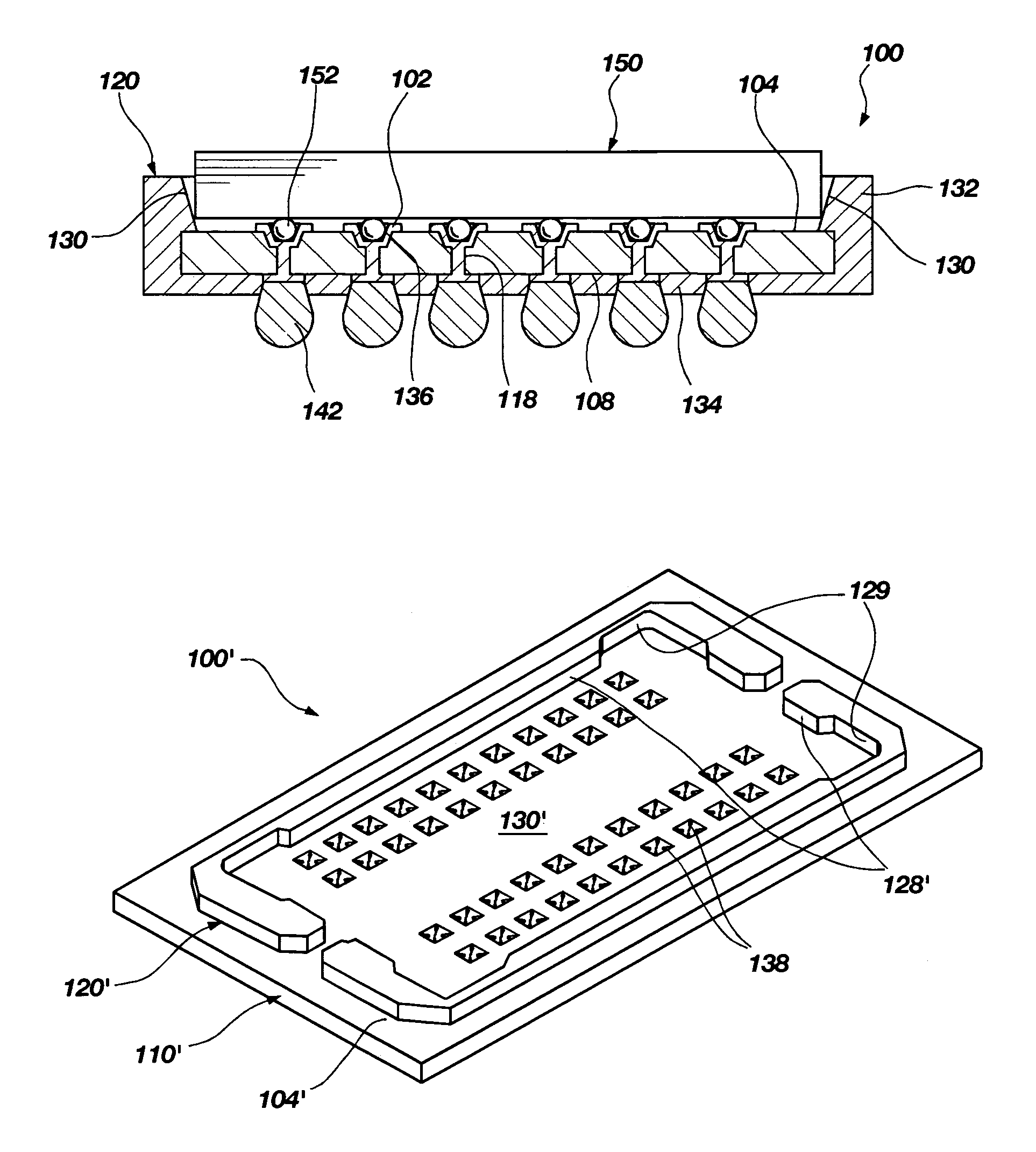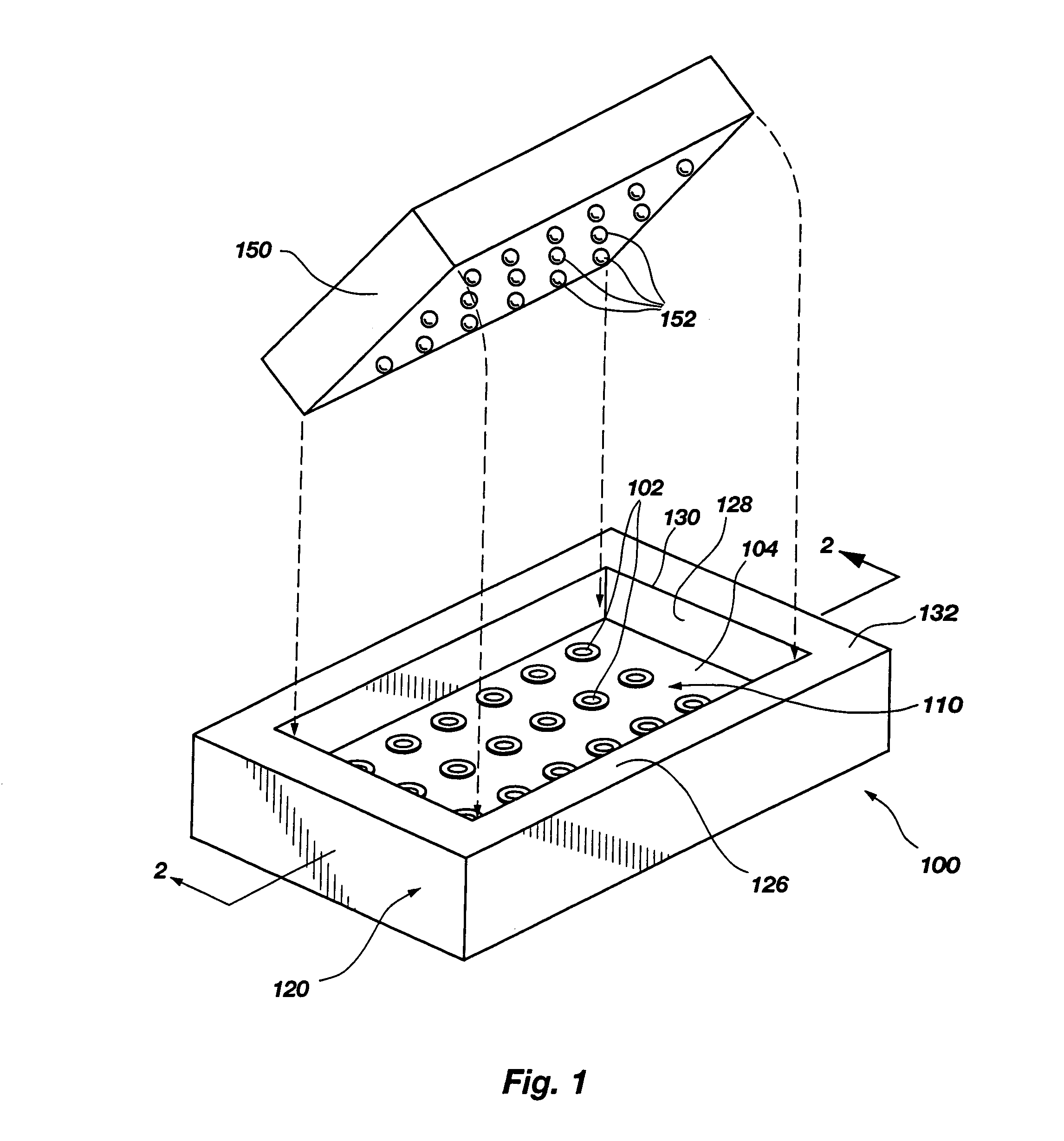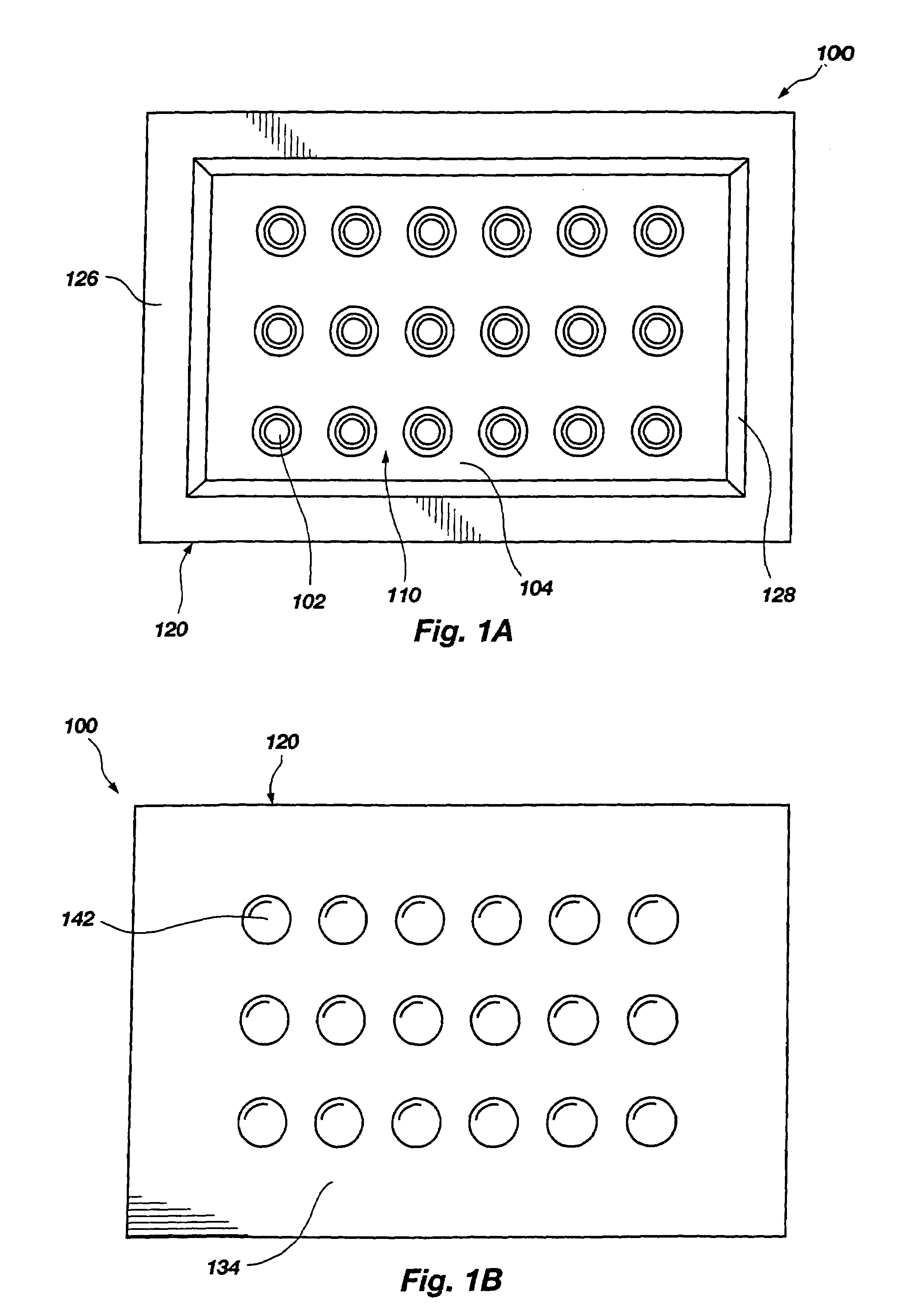Method for fabricating an interposer
a technology of interposers and components, applied in the field of interposers, can solve the problems of electrical shorts between adjacent bond wires, significant failure of semiconductor devices, and penetration of particulate die coats
- Summary
- Abstract
- Description
- Claims
- Application Information
AI Technical Summary
Benefits of technology
Problems solved by technology
Method used
Image
Examples
Embodiment Construction
The Interposer
[0049]FIGS. 1, 1A, 1B, and 2 depict an exemplary interposer 100 of the present invention. Interposer 100 includes an interposer substrate 110 with contact pads 102 on a top surface 104 thereof and contact pads 106 on a bottom surface 108 thereof. Contact pads 102 may be recessed relative to top surface 104, as illustrated in FIG. 2. Contact pads 102 on top surface 104 of interposer substrate 110 communicate with corresponding contact pads 106 on bottom surface 108 by way of vias 118 filled or lined with metal 148 or another conductive material. Conductive structures 142, such as balls, bumps, or conductive pillars, of a conductive material, such as a solder, a metal, a metal alloy, a conductor-filled epoxy, a conductive epoxy, or a conductive (e.g., z-axis) elastomer, are secured to and protrude from contact pads 106 and from interposer 100.
[0050]Interposer substrate 110 may be fabricated from any suitable material for use in semiconductor device applications, such as ...
PUM
| Property | Measurement | Unit |
|---|---|---|
| thick | aaaaa | aaaaa |
| thickness | aaaaa | aaaaa |
| size | aaaaa | aaaaa |
Abstract
Description
Claims
Application Information
 Login to View More
Login to View More - R&D
- Intellectual Property
- Life Sciences
- Materials
- Tech Scout
- Unparalleled Data Quality
- Higher Quality Content
- 60% Fewer Hallucinations
Browse by: Latest US Patents, China's latest patents, Technical Efficacy Thesaurus, Application Domain, Technology Topic, Popular Technical Reports.
© 2025 PatSnap. All rights reserved.Legal|Privacy policy|Modern Slavery Act Transparency Statement|Sitemap|About US| Contact US: help@patsnap.com



